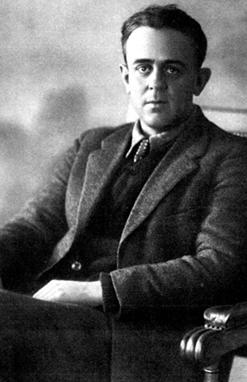No edit summary |
No edit summary Tag: Visual edit |
||
| Line 1: | Line 1: | ||
John Reed | {{Infobox person|name=John Reed|nationality=Statesian|death_place=[[Moscow]], [[Russian SFSR]]|death_date=October 17, 1920|birth_place=Portland, [[Oregon]], [[United States of America|United States]]|birth_date=October 22, 1887|death_cause=Typhus|image=John Reed.png|image_size=200}} | ||
'''John Silas Reed''' (October 22, 1887 – October 17, 1920) was a Statesian journalist and socialist. He was born in [[Portland]], Oregon in 1887. | |||
After college he entered journalism and soon became the most highly paid ace reporter in the United States of America. He was a correspondent in the Mexican war of 1916 to 17 and a reporter in the [[First World War]], a job which took him to [[Russian Empire (1721–1917)|Russia]]. He became personally involved in the Labour movement in the United States of America in 1913 when he helped organise a silk workers' strike in Paterson, [[New jersey]]; and when he returned from Russia he toured the country speaking on the [[Russian revolution of 1917|October Revolution]] and reporting for the [[Liberator]]. | |||
He was in [[Petrograd]] in 1917 and witnessed the October Revolution. In 1919, he chaired the meeting which founded the [[Communist-Labour]] party, later the [[Communist Party of the United States of America|CPUSA]]. | |||
His most notable work is [[ten days that shook the world]] which documents his first hand experiences with the [[October Revolution]]. | John Reed then returned to the Russian Soviet Federative Socialist Republic, where he died of typhus in 1920. He was buried in the [[Red Square]], in the [[Heroes' Grave]]; a plaque in the [[Kremlin]] Wall commemorates him. | ||
His most notable work is [[ten days that shook the world|''Ten Days That Shook the World'']] which documents his first hand experiences with the [[October Revolution]]. | |||
[[Category:Statesian journalists]] | |||
[[Category:Pages needing references]] | |||
Revision as of 00:20, 4 February 2023
John Reed | |
|---|---|
 | |
| Born | October 22, 1887 Portland, Oregon, United States |
| Died | October 17, 1920 Moscow, Russian SFSR |
| Cause of death | Typhus |
| Nationality | Statesian |
John Silas Reed (October 22, 1887 – October 17, 1920) was a Statesian journalist and socialist. He was born in Portland, Oregon in 1887.
After college he entered journalism and soon became the most highly paid ace reporter in the United States of America. He was a correspondent in the Mexican war of 1916 to 17 and a reporter in the First World War, a job which took him to Russia. He became personally involved in the Labour movement in the United States of America in 1913 when he helped organise a silk workers' strike in Paterson, New jersey; and when he returned from Russia he toured the country speaking on the October Revolution and reporting for the Liberator.
He was in Petrograd in 1917 and witnessed the October Revolution. In 1919, he chaired the meeting which founded the Communist-Labour party, later the CPUSA.
John Reed then returned to the Russian Soviet Federative Socialist Republic, where he died of typhus in 1920. He was buried in the Red Square, in the Heroes' Grave; a plaque in the Kremlin Wall commemorates him.
His most notable work is Ten Days That Shook the World which documents his first hand experiences with the October Revolution.